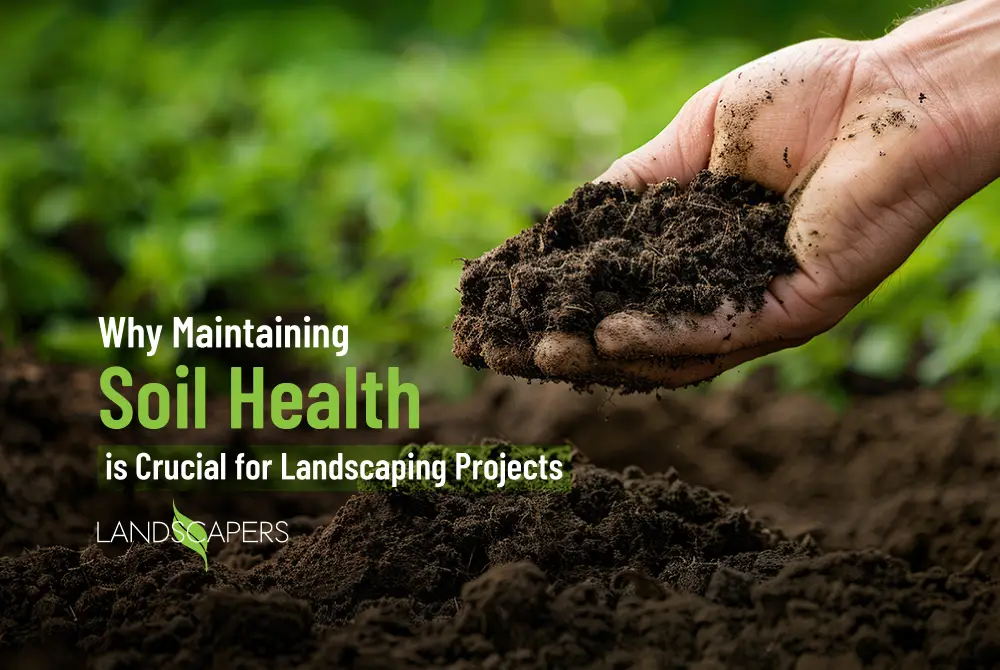
Why Maintaining Soil Health is Crucial for Landscaping Projects
Landscaping is an art that transforms outdoor spaces into beautiful, functional environments. However, beneath the surface of every successful landscaping project lies an often overlooked but essential element—soil health. The health of the soil is the foundation upon which all landscaping efforts depend. Whether you’re planting a lush garden, installing a green lawn, or designing a sustainable landscape, maintaining soil health is crucial for the long-term success and sustainability of your project.
1. The Role of Soil in Plant Growth
Soil is more than just dirt; it’s a living ecosystem that provides plants with the nutrients, water, and support they need to grow. Healthy soil is rich in organic matter, beneficial microorganisms, and essential nutrients, all of which contribute to robust plant growth.
When soil health is compromised, plants struggle to establish themselves, leading to poor growth, increased susceptibility to diseases, and higher maintenance requirements.
For instance, compacted soil restricts root growth, preventing plants from accessing the water and nutrients they need. On the other hand, soil with poor drainage can lead to waterlogged conditions, causing root rot and other issues.
By maintaining soil health, you ensure that plants have the best possible environment to thrive, leading to a more vibrant and resilient landscape.
2. Enhancing Soil Structure and Fertility
A key aspect of soil health is its structure—the way soil particles are arranged and the spaces between them. Good soil structure allows for proper air and water movement, which is essential for root development. Soil that is too compacted or poorly structured can suffocate roots, reduce water infiltration, and hinder nutrient uptake.
Fertility is another critical component of soil health. Nutrient-rich soil supports plant growth and reduces the need for chemical fertilizers. Organic matter, such as compost, plays a vital role in maintaining soil fertility by providing a slow-release source of nutrients and improving soil structure. Regularly adding organic matter to the soil can also enhance its ability to retain moisture, reducing the need for frequent watering.
3. Supporting Biodiversity and Ecosystem Health
Healthy soil is teeming with life. It hosts a diverse community of organisms, including bacteria, fungi, earthworms, and insects, all of which contribute to soil fertility and plant health.
These organisms help break down organic matter, recycle nutrients, and improve soil structure. They also play a crucial role in controlling pests and diseases, reducing the need for chemical interventions.
By maintaining soil health, you support a thriving ecosystem that benefits not only your plants but also the broader environment. Healthy soil reduces the risk of erosion, improves water quality by filtering pollutants, and sequesters carbon, helping to mitigate climate change.
4. Long-Term Sustainability and Cost-Effectiveness
Investing in soil health is an investment in the long-term sustainability of your landscaping project. Healthy soil reduces the need for frequent replanting, excessive watering, and chemical inputs, all of which can be costly and time-consuming.
Over time, a well-maintained soil ecosystem will become more self-sustaining, requiring less intervention and creating a more resilient landscape.
In addition, maintaining soil health can enhance the aesthetic appeal of your landscape. Plants growing in healthy soil are more likely to be vigorous, with rich colors, full foliage, and abundant blooms. This not only enhances the beauty of your outdoor space but also increases its value.
5. Practical Steps to Maintain Soil Health
Maintaining soil health in your landscaping projects doesn’t have to be complicated. Here are some practical steps you can take:
- Soil Testing: Before starting any landscaping project, conduct a soil test to determine its pH, nutrient levels, and organic matter content. This information will help you make informed decisions about soil amendments and plant selection.
- Add Organic Matter: Regularly incorporate organic matter, such as compost, into the soil to improve its structure, fertility, and moisture retention.
- Mulching: Apply mulch to garden beds and around trees and shrubs to conserve moisture, regulate soil temperature, and suppress weeds. As the mulch breaks down, it also adds organic matter to the soil.
- Avoid Soil Compaction: Minimize foot and machinery traffic on garden beds to prevent soil compaction. Use designated pathways and raised beds where possible.
- Crop Rotation and Cover Crops: In larger landscaping projects, consider using crop rotation and cover crops to prevent soil depletion and maintain fertility.
Conclusion
Soil health is the cornerstone of any successful landscaping project. By prioritizing and maintaining healthy soil, you create a strong foundation for plant growth, support a thriving ecosystem, and ensure the long-term sustainability of your landscape.
Whether you’re a professional landscaper or a homeowner with a green thumb, paying attention to soil health is essential for creating beautiful, resilient, and environmentally friendly outdoor spaces.

